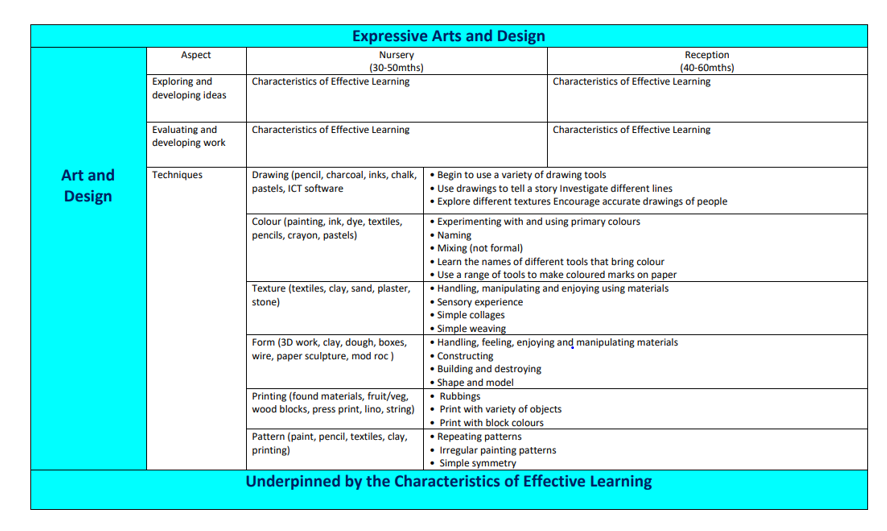Subject Leader: Emily Powell
At Hogarth Academy, we know our children are inquisitive about the world they live in and the wider universe. Through our teaching of Art & Design, the children will learn a range of subject specific skills, through which, they will gain a range of subject specific knowledge.
Art & Design is an essential part of a broad and balanced curriculum, which allows curiosity, creativity and self-expression. At Hogarth Academy, we believe that Art & Design education should engage, inspire and challenge pupils, providing them with opportunities to explore, create and develop their skills across different art forms: colour & paint, drawing & line, collage, sculpture and printing. We want the children who embark on their journey through Hogarth Academy to not only develop artistic expression, but also to develop a sound knowledge and understanding of great artists, crafts makers and designers from different time periods, cultures and artistic movements. As artists, children should be able to critically evaluate their work and the work of others, taking influence from well-known artists and adapting their work accordingly. As their skill set progresses, we aim to develop children’s understanding of how art has also changed their landscape, culture and history.
The conceptual areas as part of our whole school curriculum are:
This is the study of how artists use colour in their work and how we as artists can use colour. This includes the artistic skills of understanding how to mix, apply and use colour through; mixing secondary colours from primary colours, creating tints, shades and tones; developing an understanding of cold and warm colours and how they convey a mood; using of complementary and contrasting colours to create visual interest and engage the viewer. As their skills progress, we aim for children, as artists, to select and develop palettes for specific purposes, moods and meanings.
This is the study of how artists use line in their sketches and drawings to outline their ideas, add detail and create expression. This will include the study of natural forms such as flowers, twigs, leaves and shells. How lines can be used to create greater thickness, add texture, tone and show the form of an object through the use of shading and shadow.
This is the study of how prints are created using various materials and print making techniques. The multicultural and visual elements of shape, space and pattern and texture are taught through learning printing skills such as; Mono-printing, Block printing, Collagraph printing and lino-cuts.
This is the study of how artists use texture in their art to help tell a story and to add a sensory dimension to a piece. An understanding of texture is taught through the mediums of collage. This includes using a variety of materials, medias and collaging techniques to create collages.
This is the study of how artists create sculptures. They will learn how to associate three dimensional shapes and objects to make an art piece. They will also learn how to shape anything that is even more useful than its present form making use of everyday materials in addition to natural materials such as clay.The visual elements of shape, form, space and texture will be taught as pupils develop their manipulative skills.
These areas are learnt across each academic year as part of different overarching themes. These are: Portraits, Animals & People, Buildings, Landscapes and Still Life.
As well as these themed projects, these conceptual skills are also learnt as part of the ‘Take One Picture’ project opportunity. This is a project led by the National Gallery in London. It is a child-led project in which the children use one painting from the gallery’s collection as a stimulus for a cross-curricular investigative project. The children then apply their learnt artistic skills to respond to the painting in an art form of their own choice and design.
Art starts at Hogarth in the early years. We ensure that all pupils produce creative and imaginative work. Children have the opportunity to explore their ideas and record their experiences, as well as exploring the work of others and evaluate different creative ideas. Children will become confident and proficient in a variety of techniques including drawing, painting, printing, collage, textiles and 3D, as well as other selected craft skills whilst in EYFS – see our overview of progression in art from F1 to F2 below.
